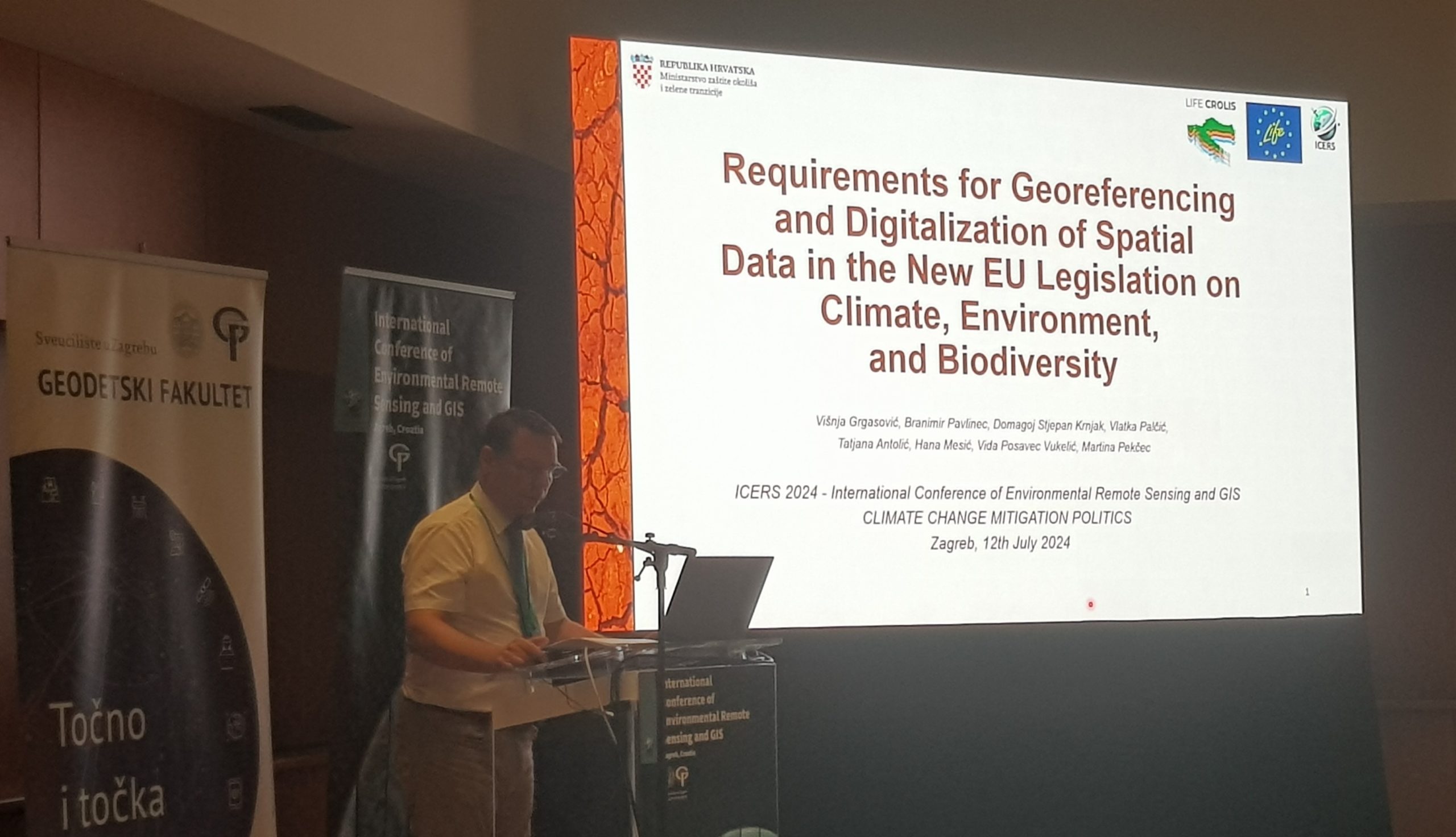
Requirements for Georeferencing and Digitalization of Spatial Data in the New EU Legislation on Climate, Environment, and Biodiversity

On the second day of the International Conference on Environmental Remote Sensing and GIS (ICERS) held at the National and University Library in Zagreb from July 11 to 12, 2024, the Ministry of Environmental Protection and Green Transition, as the coordinating beneficiary of the LIFE CROLIS project, presented the results of their work on the development of the National Land Information System in the Republic of Croatia.
Since 2019 a significant number of EU legislative acts related to climate and energy policies, as well as policies on environmental protection and biodiversity restoration, have been adopted, amended, or are still in the process of being revised and enacted. These legal initiatives require georeferencing and digitalization of spatial data collected through remote environmental monitoring.
The aim of these legislative efforts is to leverage technical and technological capabilities to obtain more precise monitoring data on policy performance in these sectors and to ensure the credibility of law enforcement through certification of fulfilled obligations and achieved goals. Additionally, the more accurate data collected over time will contribute to the development of new models and the improvement of EU policies aimed at achieving UN Millennium Goals and the EU climate neutrality targets by 2050, as well as long-term goals for biodiversity restoration and the protection of the environment.
For monitoring and implementing these policies, Member States need to advance their capabilities for tracking emissions and collection environmental data according to the new legislation requirements. Therefore, Republic of Croatia is conducting a demonstration project to develop a multi-scale and multi-purpose system – CROatian Land Information System (CROLIS). The LIFE CROLIS project is co-financed by the EU LIFE Programme.
This paper provides an overview of the new EU legislation and the requirements for georeferencing spatial data within the National Emission Inventory System and requirements for monitoring climate, environmental and biodiversity components that could be integrated into a such unified monitoring system.
Entire publication is avalable here or through the Conference website or via Open Access to all published papers: https://zenodo.org/communities/icers/.
Additionally, you can access the presentation here.
Share this post: